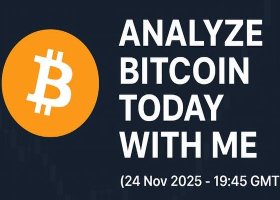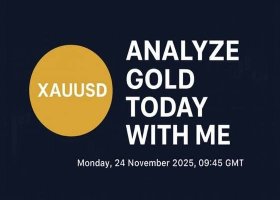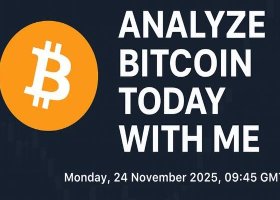1. What it is, and what it does
1. What is AI Advisor in one sentence?
AI Advisor is a context engine that reads your trading account, positions and structure, then builds rich prompts you can paste directly into any AI chat.
2. Does AI Advisor open, close or manage trades automatically?
No. AI Advisor never places, modifies or closes orders. It only reads data from your account and helps you talk to AI more precisely.
3. Why should I use AI Advisor instead of just typing my own prompts by hand?
Because manually typing balance, equity, margin, positions and structure is slow, repetitive and error-prone. AI Advisor does that assembly work for you in one click, so every AI conversation starts from a clean, complete view of your real account.
4. What exactly is in the prompt that AI Advisor builds for me?
Depending on the mode, the prompt can include:
-
Account snapshot (balance, equity, margin, free margin, margin level, leverage, floating P/L)
-
Open positions and traded symbols
-
Watchlist symbols
-
Structured technical summaries for the current symbol
-
Clear instructions for the AI on what to analyze and how to structure its answer.
2. Data, privacy and safety
5. Does AI Advisor send my account or trading data to any server?
No. AI Advisor does not contact any external server. It only reads data locally from your terminal and builds text inside the platform.
6. Does AI Advisor call AI APIs directly or place orders based on AI output?
No. It never calls AI APIs and never trades for you. You are the one who copies the text and pastes it into an AI website of your choice, and you decide what to do with the answers.
7. Do the DLL versions access anything outside the trading platform?
The DLLs are used for local tasks such as clipboard access and opening AI websites in your browser. They do not upload your account data to third-party servers.
8. Is it safe to enable DLL imports for this tool?
AI Advisor uses DLLs only for functions like copying text to the clipboard and launching web links. If you are comfortable with those functions in general, enabling DLL imports for this tool is consistent with that level of trust.
9. What exactly is stored locally for activation and licensing?
The tool stores minimal licensing information needed to recognize that a Market (non-DLL) version has been purchased and to unlock the matching DLL version on your machine. It does not store your trading history or send it anywhere.
3. Using it with AI models
10. Which AI models or websites can I use with AI Advisor?
Any AI that accepts text input: ChatGPT, DeepSeek, Gemini, Grok, Qwen, Claude, local models via a web UI, etc. AI Advisor is platform-agnostic.
11. Do I need an API key (OpenAI/DeepSeek/etc.) to use AI Advisor?
No. AI Advisor works by copy–paste only. It does not require or manage any API keys.
12. Can I edit the generated text before I paste it into an AI chat?
Yes. Once the prompt is copied to your clipboard, you can paste it into a text editor or directly into an AI chat and modify anything you like before sending.
13. Can I create my own custom prompts or modify the built-in modes?
Yes. You can edit the existing prompt files and create new ones. The “AI Advisor Modes” list simply shows the available prompt files.
14. What is [note: ...] and why is it shown in the tool but not copied to AI?
Lines starting with [note: ...] are usage notes for you. They are displayed inside AI Advisor to explain what a mode does, but they are deliberately excluded when you click Copy so they don’t pollute the prompt sent to the AI.
15. Can I change the language used in the prompts or in the AI’s answer?
Yes. The prompts include a [Language] placeholder. The EA passes through whatever language string you configure (for example, “English”, “Simplified Chinese”), and you’re free to adjust prompt wording to request responses in your preferred language.
4. Versions, licensing and activation
16. What is the difference between the Market (non-DLL) versions and the DLL versions?
-
Market (non-DLL) versions are installed via the marketplace, respect the “no DLL” rules, and act as the official purchased products and activators.
-
DLL versions are installed from a ZIP, support one-click Copy and AI website buttons, and are meant to be your daily working versions.
17. Why are there Utility and Indicator variants? Which one should I choose?
-
Utility variants behave like tools/EAs attached to a chart, good if you prefer a utility-style workflow.
-
Indicator variant behaves like an indicator on the chart, good if you like everything under “Indicators”.
Functionally they are similar – choose the style that best fits how you usually attach and manage tools.
18. Do I need to buy more than one Market version if I use multiple platforms or accounts?
You generally only need to buy one Market version per platform + style you actually use (for example, Utility on MT4, or Indicator on MT5). Multiple accounts on the same machine can use the same activation, subject to the platform’s usual rules.
19. How does activation work between Market versions and DLL versions?
You install and run the Market (non-DLL) version on your machine. It writes the necessary license/activation data locally. The matching DLL version then detects that activation and unlocks full use on live accounts.
20. Does the license bind to my account, my machine, or something else?
Licensing follows the usual marketplace rules (account + machine / hardware). AI Advisor reads that information to decide whether a DLL build should run in demo mode or activated mode on that machine.
21. What happens if I reinstall the platform, change hardware, or move to a new PC?
You may need to re-install the Market version and re-activate according to marketplace rules. Once the Market product is recognized on the new setup, the corresponding DLL version can be activated again.
5. Installation and first use
22. How do I install the Market (non-DLL) version?
Install it directly from the Market tab in your terminal (Download/Buy → Install), then refresh the Navigator. It will appear under Experts/Utilities or Indicators, depending on the product.
23. How do I install the DLL version correctly (where to put EX4/EX5 and DLL files)?
Copy the program file ( .ex4 / .ex5 ) into the appropriate Experts or Indicators folder, and copy the supporting .dll files into the Libraries folder. Then refresh the Navigator so the new entries appear.
24. Which global settings do I need for the DLL version (Allow DLL imports, etc.)?
In Tools → Options → Expert Advisors , enable “Allow DLL imports”. When attaching AI Advisor DLL builds to a chart, also tick “Allow DLL imports” in the program properties.
25. How do I start AI Advisor once it’s installed, and how do I open the panel?
In the Navigator window, find AI Advisor (Utility or Indicator), then drag it onto a chart or use “Attach to a chart”. After you confirm the settings, the AI Advisor panel appears on that chart.
26. How do I select an “AI Advisor Mode” and read what it does?
On the right side of the panel you’ll see the “AI Advisor Modes” list. Click a mode to select it. The full prompt text appears on the left, with a [note: ...] line at the top explaining what that mode is for.
27. How do I copy the prompt to the clipboard and use it in an AI chat?
Click the Copy button (or use the shortcut key if enabled). The tool replaces all placeholders with real data and copies the final prompt—without [note: ...] lines—to your clipboard. Then paste it into any AI chat window.
6. Features and customization
28. What are “AI Advisor Modes” and can I add my own modes?
Modes are simply named prompt templates. Each entry in the “AI Advisor Modes” list corresponds to one prompt file. You can edit existing ones, duplicate them, or create entirely new ones.
29. Which account metrics are included in the prompts (balance, equity, margin, leverage, etc.)?
Prompts can include:
-
Balance, equity, used margin, free margin, margin level, leverage, floating P/L
-
Position details, trading symbols, watchlist, and structured technical summaries
Different modes use these tags in different ways (for example, portfolio modes focus more on risk metrics).
30. Can I disable certain parts of the context (for example, hide my full position list)?
Yes. You can edit the prompt templates and remove or comment out any tags you don’t want to include, such as [positions] or [detailedposition] .
31. How do I reset the prompts to factory defaults if I break something?
Use the built-in “Restore” / “Restore defaults” option (if provided), or replace your modified prompt files with the original ones from the distribution package. The UI includes a Restore/Reset button for this purpose.
7. Troubleshooting
32. The tool appears in Navigator but nothing shows on the chart – what should I check?
Make sure you actually attached it to a chart (drag from Navigator or use “Attach to a chart”) and confirmed the settings dialog. Also check the “Experts” and “Journal” tabs for any error messages.
33. Copy button doesn’t seem to work / clipboard stays empty – what can cause this?
Common reasons: DLL imports are disabled, the DLL file is missing from the Libraries folder, or your system is blocking clipboard access. Check that “Allow DLL imports” is enabled and that all DLL files are in place.
34. I get errors related to DLL or imports – how do I fix them?
Verify that:
-
DLL files are in the correct Libraries folder.
-
Global “Allow DLL imports” is enabled.
-
“Allow DLL imports” is enabled in the program’s properties.
If errors persist, check the Experts/Journal logs and compare with the installation guide.
35. The tool says I’m in demo mode even on a live account – is activation missing?
Likely yes. Make sure you have installed and run the matching Market (non-DLL) version at least once on this machine under your marketplace account, so the DLL version can detect a valid activation.
36. I changed my account or server and now the license looks invalid – what can I do?
Licensing follows the marketplace rules. If a change breaks the activation, re-run the Market version on the new setup or consult the marketplace’s license/activation policy for re-activation steps.
37. AI is giving strange or low-quality answers – is that related to AI Advisor?
AI Advisor only prepares the context and prompt. The quality of answers depends mainly on the AI model, your chosen mode, and any extra instructions you add. You can improve results by refining the prompts or switching to a stronger model.
8. Limits and risk
38. Can I rely on AI output as a signal or strategy?
No. AI output is opinion and analysis, not a trading signal. Use it as one input into your own decision-making, never as an automatic trigger.
39. Does AI Advisor guarantee better performance or profit?
No. It does not guarantee performance. It can help the AI understand your situation more clearly, but results still depend on your decisions, your risk management and the behavior of the markets.
40. What are the main limitations I should keep in mind when using AI with real money?
AI can misunderstand, hallucinate, or oversimplify risk. It has no real-time execution feedback and no capital at risk. Always double-check key numbers, treat AI output as advisory only, and never risk money you cannot afford to lose.


